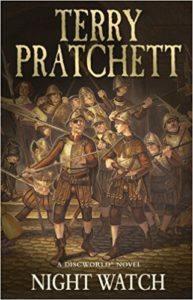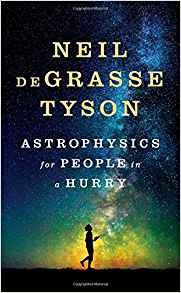This book was so great that I spent long stretches of it messaging a friend who’d also just finished it my reaction gifs (I haven’t yet figured out how to include same in these reviews, so lucky you.) I had so many feelings about how emotionally vulnerable and grand and brave this book is, how it looks at revolution and rule and war and combat and politics and love with clear eyes and a generous heart, and I loved it all. Well, except the ending.
I don’t even know if it’s because of the book itself or my instinctive reaction to recoil when a series franchise brings in a child, though thankfully this one was too young to spout improbably precocious quips or, as in the Whedonverse, to be bratty accessories that the main character needs to protect, forcing us to care about said Bratty Accessory by the transitive property of caring for our MC. Which always resulted in me disliking the MC and even moreso the creator who’d shoehorned in the Bratty Accessory in the first place. Pierce Brown fortunately avoids that latter fate, but I still felt, I dunno, uncomfortable at how baby-mad Darrow wound up being? And this coming from someone who’s pretty baby-mad herself. If I could, I’d insert a gif from the recent Wonder Woman movie where Diana gets sidetracked, squealing “Baby!” at a particularly winsome infant she’s walking by. It me, y’all.
As to Darrow + babies, it felt less like he was interested in the baby as a person as in the baby as part of a package. He’s got this idea of a Happily Ever After with a wife and kids but doesn’t actually have to do any of the work involved and I’m all, um, I get that after successfully leading a planet-spanning revolution, the minutiae of being an involved family man is small in comparison but it’s still a lot of hard work and not just a reward. Maybe it’s different for the rich who get to foist their kids and other household duties off on staff — and it’s definitely different for dudes from Darrow’s background who apparently left most of the child-rearing to their wives — but it felt like a really flawed ending to an otherwise terrific book. And in Mr Brown’s defense, he doesn’t have kids himself, so his romantic view of the situation is understandable but not, for this harried middle-class mom of three at least, sympathetic .
Anyway, that’s all probably incredibly petty given how excellent the rest of the book is. Darrow does some truly terrible things in the course of the book, particularly in his dealings with the Moon Lords of Jupiter, but I really loved how Mr Brown refused to either absolve him of his guilt or demonize him over them. This book is so perfect on so many levels that the ending felt more like a letdown than it likely really is, and I’m sure other people will swoon over it altogether. I’m definitely looking forward to reading Iron Gold after it comes out next month and am rather hoping that it addresses my issues with Morning Star and knocks some of that silliness out of Darrow’s head.





